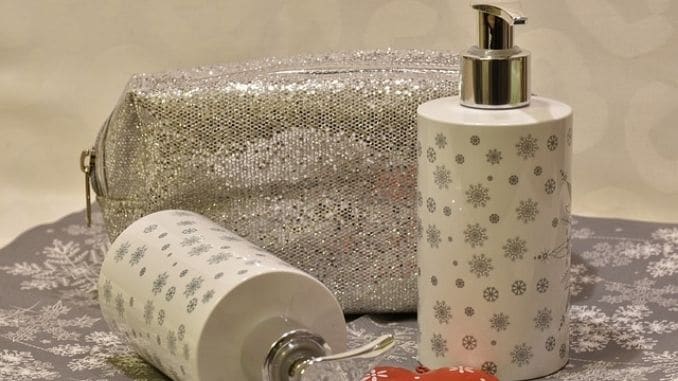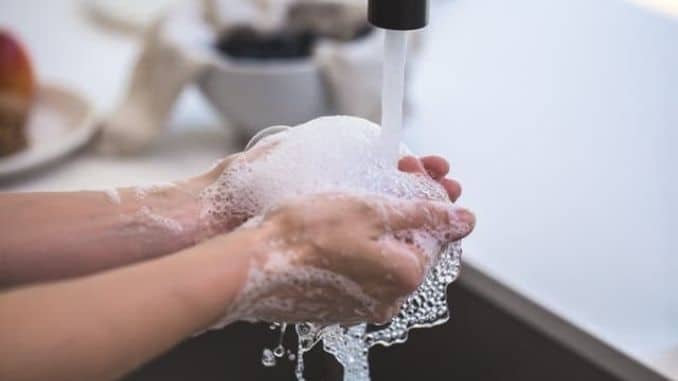Cold weather. Harsh winds. Central heating. Hot showers.
All these elements and more can combine to create dry, dull skin. But, now, the weather is changing, and spring is on its way. You want to look your best, right?
Check out our tips to help bring your winter skin back to life.
Winter Weather Is Harsh on Skin
Sometimes, we forget that skin is an organ, just like the heart or the liver. Because it serves as a barrier between us and the outside world, it seems more like a coat or protective covering.
Yes, the skin does have a strong outer layer that, when working optimally, helps keep you safe from environmental assaults, sun damage, and infections and also helps keep moisture in the skin. During the winter season, however, it can suffer wear and tear that leaves it less able to perform these functions.
When this happens, not only does your skin look less attractive than it could, it also leaves you vulnerable to issues like redness, irritation, flaking and invasion from bacteria or viruses.
Skin health and appearance go hand in hand, so if you’re not happy with how your skin looks right now, it’s probably not at its healthiest, either.
Why Skin Suffers in Cold Weather
The worst thing that happens to skin over the winter is increased dryness. Cold air is dryer than warm air, and it seeks out moisture from places like your skin, pulling water out of your skin as you go about your day.
Harsh winds and central heating dry the air out even more and that leads to dull, dry, flaky skin that may turn red and cracked. Your skin may itch, encouraging scratching, which makes the situation worse. The outer barrier is damaged by all these factors and cannot hold onto moisture as well, increasing dryness.
We love our hot showers and baths in the winter, but they contribute to dry skin. You step out, and water evaporates quickly, taking some of the moisture from the skin as it does so. The hot water also strips the skin of its natural oils, leaving it dryer overall.
We drink less water in the winter too. The cold air throws off our natural thirst, so the skin becomes dehydrated from the inside out. If you have oily or combination skin, you may find yourself breaking out at weird times as your skin tries to adapt by producing more of its own natural oils (sebum).
The products you use can make a big difference. If you went for natural butter and oils, you may have survived the winter better than most, but many over-the-counter products are filled with alcohols, preservatives, and sulfates that dry out skin further and cause irritation. Hands and lips tend to suffer the most — lips because they have a very thin outer protective barrier that is disrupted easily and hands because we wash them so much over the winter in an attempt to escape the flu.
All of this leads not only to dry skin but also inflamed red and irritated skin. If you suffer from acne or you scratch and create wounds, you could also be dealing with some scarring.
7 Ways to Revive Dull Winter Skin
Fortunately, you can bring that dry, dull and irritated skin back to life for spring. Try these seven tips and, with consistent care, you should soon notice a difference.
1. Check Your Cleanser
Cleansing is the first and most important part of your skincare routine. If you do it wrong, you strip the skin of its natural oils, creating dryness right out of the gate.
That means it’s best to avoid all bar soaps and over-the-counter cleansers that contain sodium laureth sulfate. Instead, look for gentler cleansers that contain fruit acids and coconut-based cleansers that will cleanse skin without stripping it. Your best bet is to buy from conscientious brands that care about the ingredients they’re using.
2. Use a Cleansing Brush
You’ve probably seen the new skin cleansing brushes that are available. You may have wondered if they were worth the investment.
A cleansing brush can help your skin recover more quickly from the winter months. It cleanses better than your fingers or a washcloth as the bristles help to get into the pores and dig out that makeup, dirt, and grime that can settle into them.
It also lightly exfoliates skin, sloughing off some of the dead cells that accumulate on the surface so the newer, younger cells can come forward. Once you’ve cleaned with a brush, your skin will feel livelier and cleaner and will be more likely to absorb your serums and moisturizers.
Brushing the skin on the rest of your body ― in addition to your face ― can also help shed dead skills, revive circulation and renew the skin. If you’re planning on switching to skirts and sleeveless shirts soon, this is a step you should take to help your skin look it’s best.
Get a soft brush made for the body, then brush in circular motions all over the skin right before you step into the bath or shower. Rinse off all the dead skin cells and enjoy that fresh-all-over feeling.
3. Exfoliate More Often
Spring is a good time to either start exfoliating or increase the number of times you exfoliate per week. Dryness, dullness, and flakiness indicate you have a buildup of dead skin cells on the surface, and you need to get rid of them if you want your skin to look better.
In fact, as long as that “crust” of dead cells remain, it won’t matter how much moisturizer you put on as it won’t be able to penetrate the deeper layers of skin. This is particularly true on your hands. If you’ve got dry, cracked knuckles and moisturizer isn’t helping, this is why.
To get your skin ready for spring, exfoliate at least a couple of times a week. On your face, use a gentle exfoliating product made of fruit acids, such as glycolic, lactic, malic or tartaric acids, and enzymes if you have sensitive skin. Normal skin types may do just fine with a sugar scrub or other crystal-based scrub but be careful. If you break out after exfoliating, it’s probably because the crystals or other scrubbing ingredients scratched the skin. Choose a gentler formula.
You can also make a homemade scrub yourself using brown sugar and honey or a natural oil like olive or jojoba. Mix the two, then use them to scrub the skin gently. A sugar scrub can work well on your lips too. If they are chapped, use a scrub every other day until they start to look better.
Don’t forget your hands — you can use your homemade scrub or use the one you use on your face on your hands too. Always follow with moisturizer.
4. Get a Retinol Serum
Retinol is a form of vitamin A that helps accelerate skin renewal, enhance collagen production, smooth skin, fade fine lines and wrinkles and even out hyperpigmentation. Talk to a dermatologist, and he or she will tell you that this is the most effective ingredient out there right now when it comes to battling skin aging.
It does take time to get used to retinol. When you first use it, your skin may react with redness, dryness or flakiness. Start with a “sensitive skin” formulation, then gradually work your way up to stronger formulas.
It does take time to see results with retinol. You need at least 12 weeks before you’re likely to notice any changes in your skin. If you’re noticing signs of aging, however, and you want to delay them, retinol should be in your skin care regimen. This is also one of the best ingredients to help brighten and bring skin back to life after a tough winter. Start using it now and by summer time you should notice a difference.
5. Get a Serious Moisturizer for Your Hands
If you’re like most people, your hands suffer the most over the winter season. We wash them a lot to avoid getting sick, but all that washing strips them of moisture. Hands are often more exposed to the elements too, which can leave them dry, cracked and even bleeding.
If you’ve tried other moisturizers, and they’re not working, it’s time to get serious. Start by exfoliating your hands a couple of times a week, then look for a hand cream with natural butter ―such as shea or cocoa ― glycerin, natural oils and a couple of other key ingredients: paraffin and allantoin.
Paraffin is a colorless wax that is often applied to the hands and feet because it’s so effective. It makes skin supple and soft, adding moisture and continuing to boost moisture levels for hours after application.
Allantoin is extracted from the root of the comfrey plant and helps heal and protect the skin while stimulating the growth of new tissue. It’s gentle and non-irritating and increases the water content of cells while helping the skin to hold onto the moisture it already has.
When looking for a good hand moisturizer, cream or butter will be more effective than a lotion. Turn the product over and look at the ingredient list before buying.
6. Invest in Quality Moisturizers for Face and Body
Because dryness is one of the main concerns after a long winter, it’s time to find a high-quality moisturizer for both skin and body.
You need something that will restore the moisture in the deeper layers of skin, so look for ingredients like the following:
- Ceramides: These are similar to the fats found naturally in skin, and they help seal in water and reinforce the skin’s natural moisture barrier
- Glycerin: It helps draw moisture into the skin cells
- Hyaluronic acid: This is a molecule that absorbs water and helps plump up skin
- Lactic acid: It not only helps exfoliate skin, but it hydrates too
- Antioxidants: This help protect the skin from the sun and other environmental assaults; look for green tea, resveratrol, vitamin C and E, quercetin and various plant extracts
- Lubricating ingredients: These include natural butter like shea and cocoa as well as oils like coconut, borage, and sunflower
These ingredients are important in both facial and bodily moisturizers. The main thing is to look for quality formulas. Spending your money on cheap lotions that are filled with cheap ingredients will provide only a temporary sheen on your skin that will vanish quickly and may leave your skin dryer overall.
7. Brighten Naturally
If winter left your skin dull and marred by age spots and dark areas, you may need to brighten things up. Retinol will help, but you can also try formulas that include these ingredients to help fade dark areas.
Keep in mind that dark spots contain a high amount of melanin, which is skin’s natural pigmentation, so ingredients that help limit melanin production will help fade those spots:
- Licorice: It has natural compounds “glabridin” and “liquiritin” that help break up and remove melanin, fading excess pigmentation
- Kojic acid: It comes from mushroom-like fungi and helps prohibit the production of melanin
- Arbutin: It is a natural form of the lightening ingredient hydroquinone and is much safer to use
- Niacinamide: A form of vitamin B3, it decreases the amount of melanin transferred to pigment-producing cells
- Vitamin C: A powerful antioxidant, vitamin C also helps brighten hyperpigmentation
- Mulberry: Mulberry extract naturally lowers melanin production and also works as an antioxidant
What we put on our skin is vitally important, as is what we put in on bodies. For your guide to the best foods to heal your body, check out The Best Foods that Rapidly Slim & Heal in 7 Days, here!









